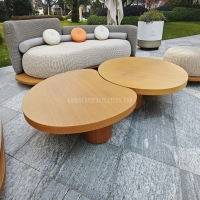Welcome to the website for landscape facilities products and knowledge.
How does the table’s design facilitate easy integration with smart lighting systems?
Contemporary table designs have evolved beyond mere furniture pieces into sophisticated hubs that facilitate effortless integration with smart lighting systems. This seamless compatibility stems from several innovative design elements that work in harmony with modern home automation technology.
The foundation of this integration lies in strategically placed embedded sensors within the table structure. These sensors can detect presence, ambient light levels, and even specific user gestures, allowing the table to communicate intelligently with connected lighting systems. Many modern tables incorporate discreet charging pads and USB-C ports that can power smart lighting controllers while keeping cables completely hidden from view.
Wireless connectivity forms the backbone of this integration, with tables featuring built-in Bluetooth Mesh and Wi-Fi capabilities. This enables direct communication with smart bulbs and lighting systems without requiring additional hubs or bridges. The table surface itself often serves as an intuitive control interface, with touch-sensitive zones or subtle gesture recognition areas that allow users to adjust lighting scenes, brightness, and color temperature with simple touches or hand movements.
Manufacturers are incorporating dedicated compartments for smart home controllers within table designs, ensuring these devices remain accessible yet unobtrusive. These compartments often include integrated wireless charging and cable management systems to maintain a clean aesthetic. Some advanced tables even feature built-in voice assistant compatibility, acting as central communication points for voice-controlled lighting commands.
The materials selection plays a crucial role in this integration. Manufacturers avoid using metals that might interfere with wireless signals, instead opting for smart materials that enhance connectivity while maintaining structural integrity. Many tables now include dedicated channels for cable routing and hidden compartments that house the necessary electronics for lighting control systems.
Power management represents another critical design consideration. Modern tables incorporate smart power strips with energy monitoring capabilities and scheduled charging functions. This ensures that all connected lighting devices receive optimal power while providing energy usage data to homeowners. The integration extends to mobile applications, where users can create customized lighting scenes that synchronize with table-based control systems.
This sophisticated design approach transforms ordinary tables into central command centers for home lighting, creating cohesive ecosystems where furniture and technology work in perfect harmony. The result is an enhanced user experience where environmental control becomes intuitive, efficient, and seamlessly integrated into daily living spaces.
Related search:

Recommendation
Elliptical metal outdoor table with nested design, resembling wood grain, round table